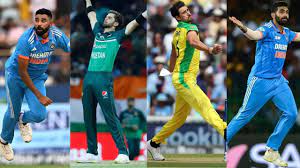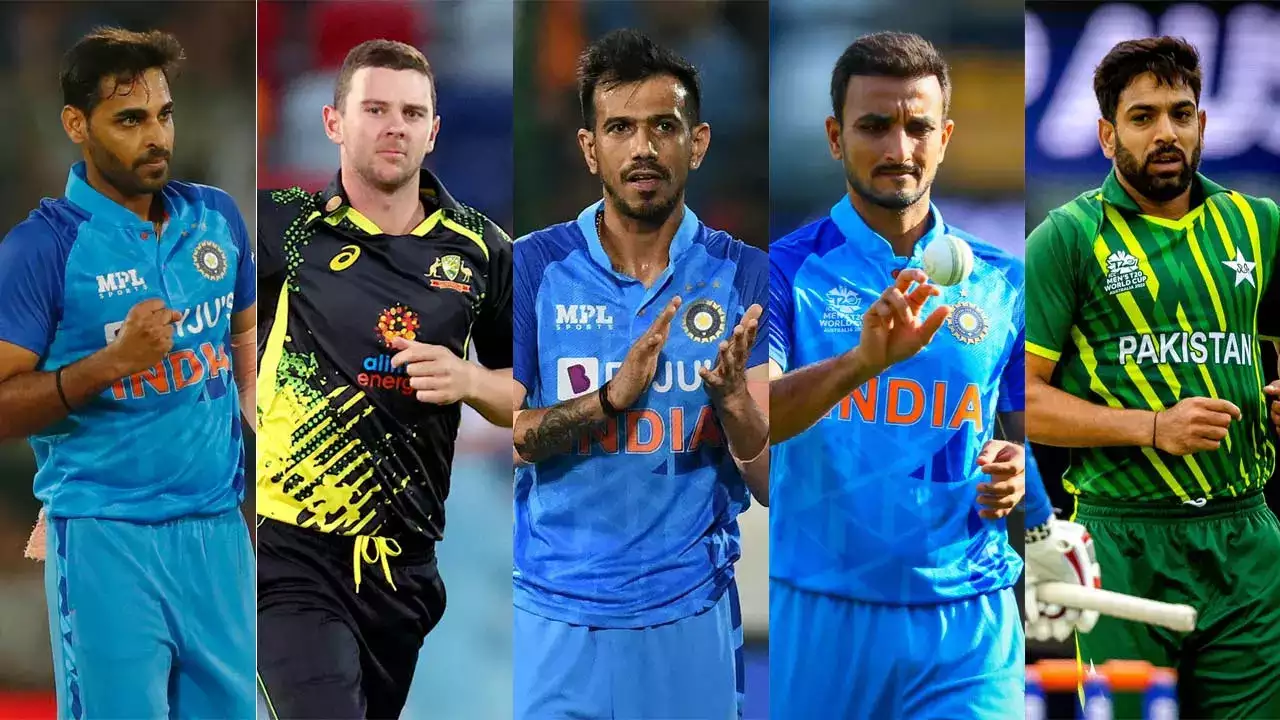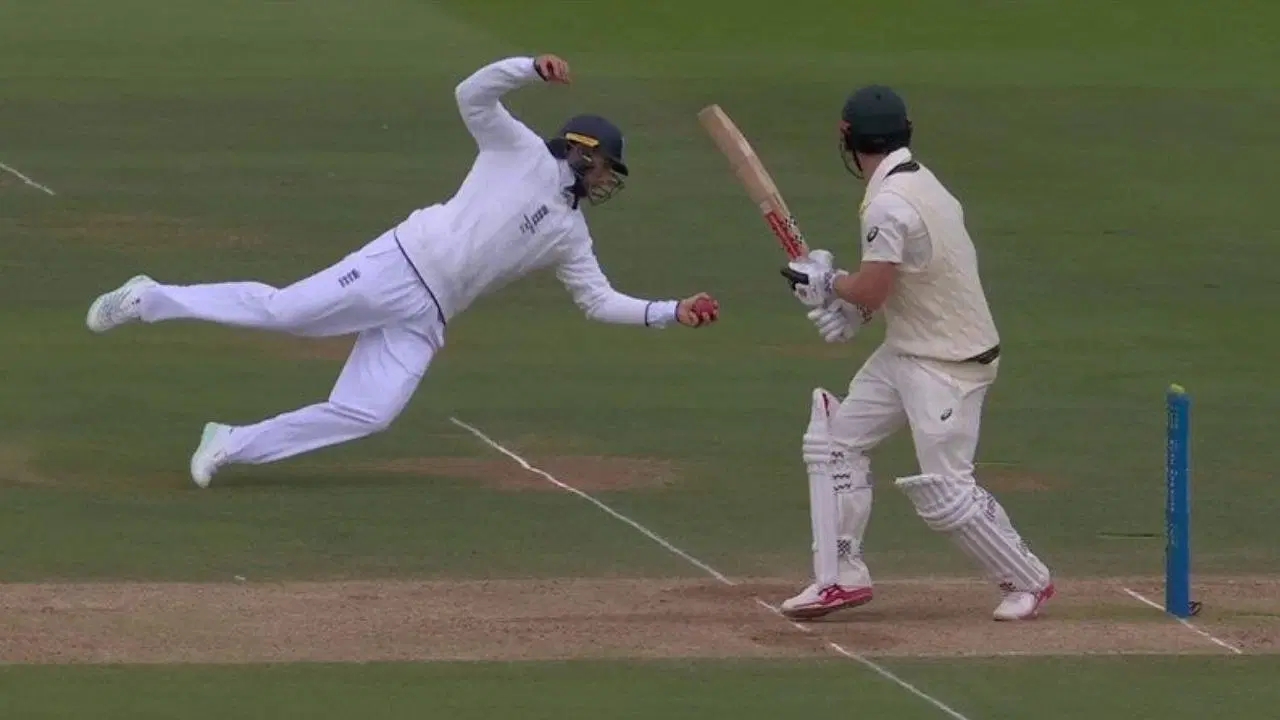What Is Bowling Strike Rate In Cricket ?
Introduction
In the realm of cricket statistics, bowling strike rate stands as one of the most significant metrics used to evaluate a bowler’s effectiveness and impact on the game. It provides valuable insights into a bowler’s ability to take wickets and exert pressure on the opposing batsmen. In this comprehensive guide, we will delve into the intricacies of bowling strike rate, its importance in cricket, and how it is calculated.
Understanding Bowling Strike Rate
Bowling strike rate, often simply referred to as “strike rate,” is a statistical measure used in cricket to assess the frequency at which a bowler takes wickets. It represents the average number of balls bowled by a bowler for each wicket taken. A lower strike rate indicates that the bowler takes wickets more frequently, while a higher strike rate suggests that the bowler takes longer to dismiss batsmen.
Significance of Bowling Strike Rate

Bowling strike rate is a crucial indicator of a bowler’s effectiveness and impact on the game. It reflects their ability to break partnerships, apply pressure on the batting side, and influence the course of the match. Bowlers with low strike rates are often considered more threatening and valuable to their teams, as they have a knack for taking wickets at crucial junctures.
Highest career strike rate (T20I)
| Rank | Strike rate | Runs scored | Balls faced | Batsman | Team | T20I career span |
|---|---|---|---|---|---|---|
| 1 | 173.97 | 508 | 292 | Kayron Stagno | Gibraltar | 2022–2023 |
| 2 | 171.55 | 2,141 | 1,248 | Suryakumar Yadav | India | 2021–2023 |
| 3 | 171.21 | 815 | 476 | Taranjeet Singh | Romania | 2021–2023 |
| 4 | 170.04 | 687 | 404 | Saber Zakhil | Belgium | 2019–2023 |
| 5 | 167.24 | 771 | 461 | Kushal Malla | Nepal | 2019–2024 |
| Qualification: 250 balls. Last updated: 21 April 2024 | ||||||
Highest career strike rate (ODI)
Calculation of Bowling Strike Rate

Bowling strike rate is calculated by dividing the total number of balls bowled by the bowler by the total number of wickets taken, and then multiplying the result by 6 (since there are six balls in an over). The formula for calculating bowling strike rate is as follows:
Bowling Strike Rate= (Total wickets taken/Total balls bowled) × 6
For example, if a bowler has bowled 1200 balls and taken 40 wickets, their bowling strike rate would be:
Bowling Strike Rate=120040×6=180Bowling Strike Rate=401200×6=180
This means that the bowler takes a wicket approximately every 180 balls.
Interpreting Bowling Strike Rate:
A lower bowling strike rate indicates that the bowler is more effective in taking wickets, as they require fewer deliveries to dismiss batsmen. Bowlers with strike rates below 30 are typically considered exceptionally good, while those with strike rates between 30 and 50 are considered above average. However, it’s essential to consider factors such as pitch conditions, opposition strength, and the bowler’s role in the team when interpreting strike rates.
Factors Affecting Bowling Strike Rate:
Highest strike rate
| Strike rate | Player | Runs | Balls faced | Period |
|---|---|---|---|---|
| 111.58 | Ashleigh Gardner | 973 | 872 | 2017–2024 |
| 99.77 | Chloe Tryon | 1,806 | 1,810 | 2011–2024 |
| 97.98 | Alyssa Healy | 3,011 | 3,073 | 2010–2024 |
| 95.93 | Nat Sciver-Brunt | 3,443 | 3,604 | 2013–2024 |
| 92.20 | Meg Lanning | 4,602 | 4,991 | 2011–2023 |
| Qualification: 500 balls faced. | ||||
Several factors can influence a bowler’s strike rate, including:
- Skill and Technique: Bowlers with exceptional skill and technique are more likely to take wickets regularly, thus boasting lower strike rates.
- Bowling Conditions: Pitch conditions, weather, and the state of the ball can all affect a bowler’s ability to take wickets. Bowlers may have higher strike rates on flat pitches or in unfavourable bowling conditions.
- Opposition Strength: Bowling against strong batting line-ups may make it more challenging for bowlers to take wickets, resulting in higher strike rates.
- Role in the Team: The role assigned to a bowler by their captain or coach can influence their strike rate. For example, a strike bowler tasked with taking wickets may have a lower strike rate compared to a containing bowler focused on building pressure.
- Fielding Support: Effective fielding and catching can contribute to a bowler’s success in taking wickets, thereby impacting their strike rate.
Highest career strike rate (ODI)
| Rank | Strike rate | Player | Team | Runs | Balls faced | Period |
|---|---|---|---|---|---|---|
| 1 | 130.22 | Andre Russell | West Indies | 1034 | 794 | 2011–2019 |
| 2 | 126.91 | Glenn Maxwell | Australia | 3895 | 3069 | 2012–2023 |
| 3 | 117.11 | Jos Buttler | England | 5022 | 4288 | 2012–2023 |
| 4 | 117.06 | Lionel Cann | Bermuda | 590 | 504 | 2006–2009 |
| 5 | 117.00 | Shahid Afridi | Pakistan | 8064 | 6892 | 1996–2015 |
| Last updated: 3 November 2023 | ||||||
| Qualification: Faced at least 500 balls. | ||||||
Bowling Strike Rate: History

Early Years (Pre-20th Century):
In the nascent stages of cricket, during the 18th and 19th centuries, the game bore little resemblance to its modern counterpart. Matches were played on rudimentary pitches, often favoring bowlers due to unpredictable bounce and variable conditions. However, the concept of strike rate was not formally recognized, and statistical record-keeping was rudimentary at best.
Test Cricket Pioneers (Late 19th to Early 20th Century):
With the advent of Test cricket in the late 19th century, statistical analysis began to gain prominence. Bowlers like Fred Spofforth and Sydney Barnes emerged as pioneers, renowned for their ability to wreak havoc with the ball. However, strike rates during this era were relatively high compared to contemporary standards, reflecting the dominance of bowler-friendly conditions and the primacy of defensive play.
Golden Age of Spin (Mid-20th Century):
The mid-20th century witnessed the ascendancy of spin bowling, particularly in subcontinental conditions. Bowlers like Shane Warne, Muttiah Muralitharan, and Anil Kumble mesmerized batsmen with their guile and cunning. Consequently, spinners often boasted lower strike rates compared to their pace counterparts, capitalizing on turning tracks and exploiting batsmen’s vulnerabilities against spin.
Era of Dominant Pace (Late 20th to Early 21st Century):
As cricket entered the late 20th and early 21st centuries, fast bowling reigned supreme, propelled by the likes of Wasim Akram, Glenn McGrath, and Dale Steyn. With improved pitches, advanced equipment, and greater emphasis on athleticism, fast bowlers generated intimidating pace and movement, resulting in a surge of wicket-taking deliveries. Consequently, bowling strike rates plummeted, as pacers wreaked havoc on batsmen with their lethal deliveries.
Modern Era (21st Century Onwards):
In the contemporary cricket landscape, characterized by the proliferation of T20 leagues and a relentless pursuit of run-scoring, bowling strike rates have become increasingly nuanced. While express pace and deceptive spin continue to pose threats to batsmen, the advent of aggressive batting strategies and flat pitches has posed challenges for bowlers. Consequently, bowlers must adapt and innovate to maintain competitive strike rates in the face of evolving batting techniques and playing conditions.
Importance of Bowling Strike Rate in Cricket Analysis

Bowling strike rate serves as a crucial tool for cricket analysts, coaches, and selectors in evaluating bowlers’ performances and making strategic decisions. It provides insights into a bowler’s consistency, effectiveness, and impact on the game, helping teams identify their key wicket-takers and formulate match strategies accordingly.
Moreover, bowling strike rate allows for comparisons between bowlers across different formats of the game, enabling selectors to assess players’ adaptability and versatility. It also helps in identifying emerging talents and nurturing them for future challenges.
Examples of Bowlers with Impressive Bowling Strike Rates
Sir Richard Hadlee :
- New Zealand’s Bowling Virtuoso: Sir Richard Hadlee, the iconic New Zealand all-rounder, remains one of the greatest cricketers of all time, revered for his unparalleled bowling prowess.
- With a career spanning from the late 1970s to the early 1990s, Hadlee showcased a remarkable bowling strike rate that left batsmen trembling at the crease. His ability to swing the ball both ways, coupled with deadly accuracy and relentless aggression, made him a nightmare for opposition batsmen.
- Hadlee’s bowling strike rate in Test cricket stands as a testament to his dominance, averaging around 50 balls per wicket throughout his illustrious career.
- This exceptional strike rate not only reflects his ability to take wickets consistently but also underscores his impact in breaking crucial partnerships and turning the tide of matches in New Zealand’s favor.
Wasim Akram :
- The Sultan of Swing: Wasim Akram, the legendary left-arm fast bowler from Pakistan, revolutionized the art of swing bowling with his prodigious talent and impeccable skill.
- Renowned for his ability to move the ball both ways at blistering pace, Akram terrorized batsmen with his lethal yorkers, deceptive bouncers, and devastating reverse swing. His extraordinary bowling strike rate remains a testament to his unparalleled mastery of seam and swing bowling.
- Throughout his illustrious career, Akram maintained a bowling strike rate in both Test and ODI cricket that placed him among the elite echelons of the game.
- His remarkable ability to take wickets at crucial junctures and dismantle batting lineups with surgical precision cemented his legacy as one of the greatest fast bowlers of all time.
Malcolm Marshall :
- The West Indian Firebrand: Malcolm Marshall, the fiery fast bowler from the West Indies, was a fearsome competitor known for his express pace, pinpoint accuracy, and relentless aggression. Despite his relatively short stature, Marshall possessed an innate ability to generate prodigious bounce and seam movement, leaving batsmen grappling with his unplayable deliveries.
- His exceptional bowling strike rate is a testament to his ability to wreak havoc on opposition batting lineups with his sheer pace and skill.
- Marshall’s bowling strike rate in Test cricket remains a benchmark of excellence, averaging around 46 balls per wicket throughout his illustrious career.
- His ability to strike at regular intervals and break stubborn partnerships played a pivotal role in the dominance of the formidable West Indian pace battery during the 1980s.
Glenn McGrath :
- The Metronome of Australian Cricket: Glenn McGrath, the legendary Australian fast bowler, epitomized precision and consistency with his immaculate line and length, relentless accuracy, and unwavering discipline.
- Renowned for his unerring ability to hit the perfect length consistently, McGrath tormented batsmen with his nagging line and subtle seam movement, often inducing false strokes and edged catches to the slip cordon. His exceptional bowling strike rate is a testament to his unwavering ability to keep the pressure on batsmen and create opportunities for his team.
- McGrath’s bowling strike rate in both Test and ODI cricket remains among the best in the history of the game, averaging around 52 balls per wicket in Tests and 35 balls per wicket in ODIs.
- His remarkable consistency and ability to perform under pressure made him a formidable force in the Australian bowling arsenal, contributing significantly to their unparalleled success on the international stage.
Dale Steyn :
- The South African Speedster: Dale Steyn, the South African pace sensation, redefined fast bowling with his blistering pace, devastating reverse swing, and relentless aggression.
- Armed with an intimidating bouncer and lethal yorker, Steyn struck fear into the hearts of batsmen with his sheer pace and hostility.
- His exceptional bowling strike rate is a testament to his ability to dismantle batting lineups with sheer pace and aggression, often delivering crucial breakthroughs for his team when it mattered most.
- Steyn’s bowling strike rate in Test cricket stands as a testament to his dominance, averaging around 42 balls per wicket throughout his illustrious career.
- His ability to generate pace, movement, and bounce on any surface made him a potent weapon in South Africa’s bowling arsenal, earning him accolades as one of the greatest fast bowlers of the modern era.
Bowling strike rate is a fundamental metric in cricket that provides valuable insights into a bowler’s effectiveness, consistency, and impact on the game. It serves as a yardstick for evaluating bowlers’ performances, identifying key wicket-takers, and formulating match strategies.
FAQs
What is Bowling Strike Rate in Cricket?
Bowling Strike Rate in cricket is a statistical measure used to assess the effectiveness and efficiency of a bowler. It indicates the average number of balls bowled by a bowler for every wicket taken.
How is Bowling Strike Rate Calculated?
Bowling Strike Rate is calculated by dividing the total number of balls bowled by the total number of wickets taken by the bowler and then multiplying the result by 6 (as there are 6 balls in an over). The formula is: Bowling Strike Rate = (Total Balls Bowled / Total Wickets Taken) * 6.
What does a Lower Bowling Strike Rate Indicate?
A lower Bowling Strike Rate indicates that the bowler takes fewer balls to dismiss a batsman, which reflects their ability to take wickets more frequently. Bowlers with low strike rates are often considered more effective and impactful in the game.
How is Bowling Strike Rate Different from Bowling Average?
Bowling Strike Rate and Bowling Average are two different statistical measures used to evaluate bowlers. While Bowling Strike Rate focuses on the rate at which a bowler takes wickets, Bowling Average calculates the average number of runs conceded by the bowler per wicket taken.
Why is Bowling Strike Rate Important?
Bowling Strike Rate is important as it provides insights into the bowler’s ability to make breakthroughs and take wickets at regular intervals. It helps teams assess the effectiveness of bowlers in applying pressure on batsmen and influencing the course of the game.
What are the Factors Affecting Bowling Strike Rate?
Several factors can affect a bowler’s Strike Rate, including pitch conditions, weather, bowler’s skill level, opposition’s batting strength, and fielding support. Bowlers with good accuracy, variations, and ability to exploit weaknesses in batsmen tend to have better strike rates.
Who Holds the Record for the Best Bowling Strike Rate in Cricket?
The record for the best Bowling Strike Rate in cricket varies across different formats and eras. Players like Dale Steyn, Waqar Younis, and Malcolm Marshall are among those known for their exceptional strike rates in international cricket.




